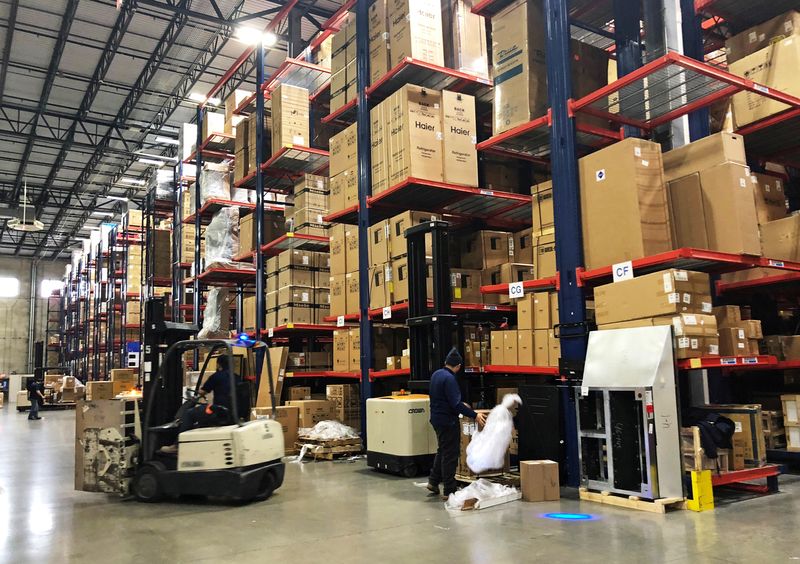WASHINGTON (Reuters) -U.S. wholesale inventories recorded their smallest increase in nearly 2-1/2 years in December, suggesting that businesses were holding back on placing new orders for goods amid a stagnation in sales as higher interest rates curb demand.
The Commerce Department said on Wednesday that wholesale inventories edged up 0.1% as previously reported last month. That was the smallest gain since July 2020. Stocks at wholesalers increased 0.9% in November. Economists polled by Reuters had expected that inventories would be unrevised.
Inventories are a key part of gross domestic product. There were increases in wholesale stocks of motor vehicles and electrical equipment. But furniture, computer and professional equipment inventories declined. There were also big decreases in stocks of apparel, farm products, petroleum and paper.
Wholesale inventories advanced 17.6% in December on a year-on-year basis. Inventory accumulation surged in the fourth quarter, mostly reflecting an unwanted piling up of goods, as higher borrowing costs contributed to the slowest pace of growth in domestic demand in 2-1/2 years.
Inventories accounted for half of the 2.9% annualized growth in GDP last quarter, and a liquidation of these unsold goods could contribute to tipping the economy into recession.
Since March, the Federal Reserve has hiked its policy rate by 450 basis points from near zero to a 4.50%-to-4.75% range.
On Tuesday, Fed Chair Jerome Powell said the U.S. central bank’s fight to tame inflation could last “quite a bit of time,” in a nod to January’s blowout job gains and the lowest unemployment rate in more than 53-1/2 years.
Wholesale inventories, excluding autos, fell 0.2% in December. This component goes into the calculation of GDP.
Sales at wholesalers were unchanged in December after declining 1.4% in November. Sales have softened since last July. Much of the decline in sales in December was concentrated in lumber and miscellaneous durable goods. There were also notable decreases in sales of apparel, alcohol, petroleum and chemicals.
At December’s sales pace it would take wholesalers 1.36 months to clear shelves. That was unchanged from November and the highest inventories-to-sales ratio since June 2020.
(Reporting by Lucia Mutikani; Editing by Andrea Ricci)
